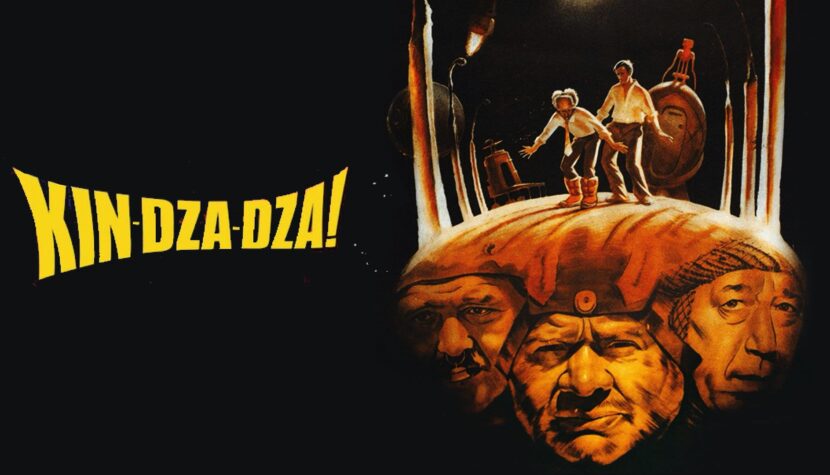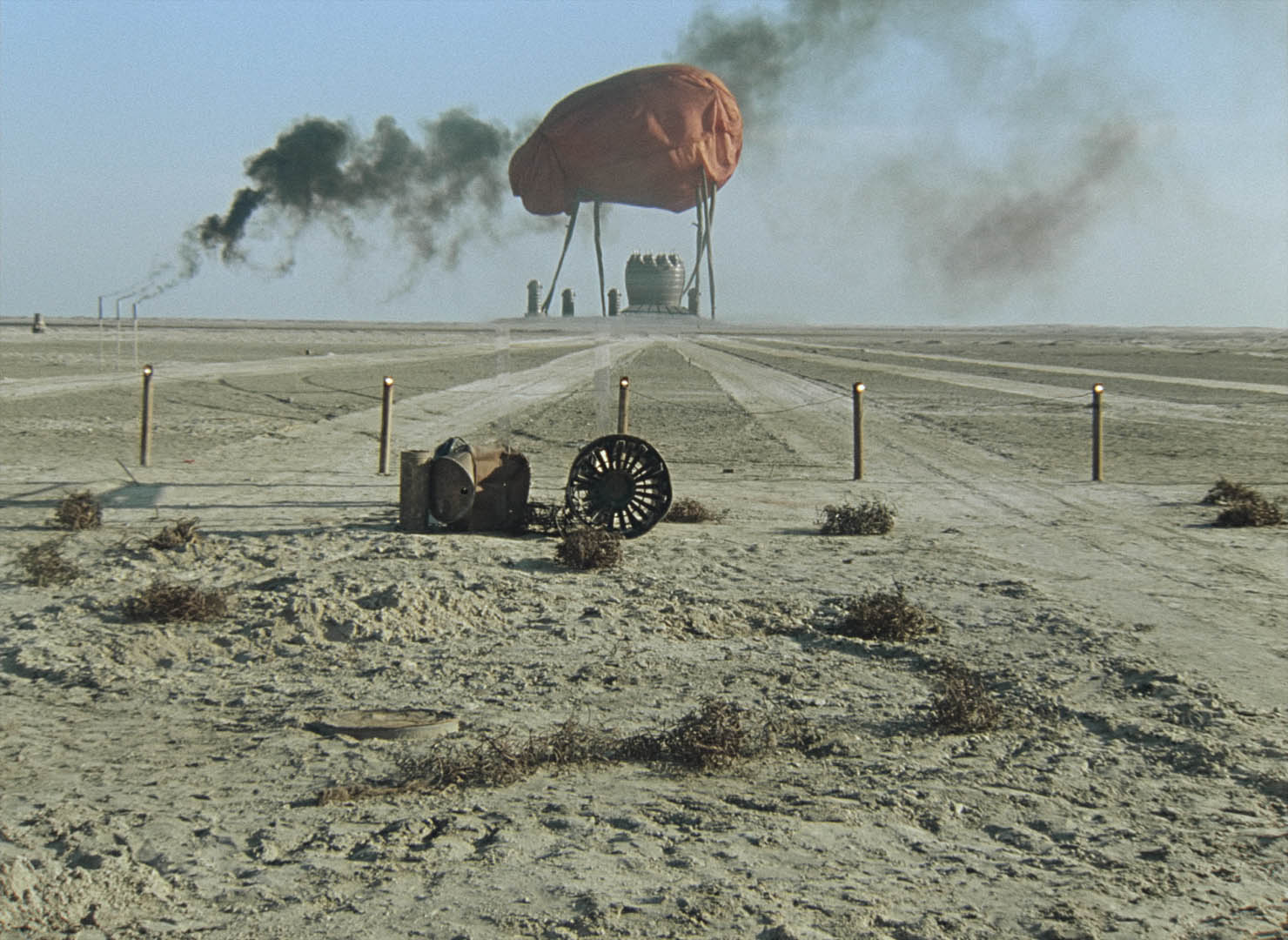KIN-DZA-DZA! Salvadore Dali-inspired surreal science fiction

I’m a big fan of the science fiction genre, and ever since I learned to read, I’ve been devouring novels by Russian authors in this vein: Bulichov, the Strugatsky brothers, and more recently Glukhovsky and Dyakov. Georgiy Daneliya’s film, on the other hand, is a ruthless parody of the genre, much like Polish Seksmisja. Despite good reviews and the fact that Kin-Dza-Dza was a huge box office success (seen by over 15 million viewers when it was released in theaters), I was a bit apprehensive about it. As it turned out, I worried for nothing because it deserves cult comedy status.
I must warn anyone who decides to watch Kin-Dza-Dza! right from the start not to even attempt to take this film seriously because there is absolutely nothing serious about it. Both the culture of the fictional planet Pluk and the technology, clothing, and behavior of its inhabitants are primarily meant to amuse the viewer. This doesn’t mean, of course, that Daneliya‘s film is stupid—some jokes are quite subtle and demonstrate a great deal of self-awareness.

Kin-Dza-Dza! tells the story of two random inhabitants of Moscow who, due to an unexpected encounter with a representative of an alien civilization, find themselves on a foreign planet called Pluk. There, they encounter the natives, who, although clearly human, have completely different customs from Earthlings.
The film is divided into two parts. In the first, the involuntary space explorers try to navigate their way through the new reality, where everything seems nonsensical. The viewer moves around the planet with the characters and is just as bewildered as they are. In the second part, the characters have spent some time on the alien planet and can function there. The creators also explain the meaning of certain words, objects, and behaviors to the audience, allowing viewers to feel a bit like the characters learning a new life. This technique truly draws the viewer into the plot and engages them. I also think that the choice of main characters may have been deliberate—they are rather unheroic; just ordinary, average Muscovites, much like the target audience of this film.

A few words should be devoted to the set design. Most of the film takes place on the planet Pluk, which is portrayed as the Kara Kum desert (yes, Uncle Vova’s observation in one of the early scenes was not accidental). The surreal nature of Kin-Dza-Dza! is emphasized in several places with obvious references to the paintings of Salvador Dalí. It’s very possible that Dalí himself inspired the creators of the film, even though they approached the subject in a mocking manner. The film has a quite distinctive color scheme—yellows and browns dominate both the landscape and the attire of the actors playing the natives. Scrap metal is used in the set design and costumes to create abstract, metallic installations. The resulting effect strongly reminds me of the Mad Max series—it’s possible that this association goes a bit too far, but I wouldn’t be surprised if it turned out that Daneliya is a fan of it. Or that George Miller, who directed Mad Max: Fury Road, is a fan of the Soviet comedy from nearly thirty years earlier.

I think Kin-Dza-Dza! is not a film for everyone. To appreciate it, one must have a fairly specific sense of humor and an open mind; otherwise, all they’ll see on the screen are antics. However, fans of comedies like Polish Rejs or Hydrozagadka should have a great time. Georgiy Daneliya’s comedy presents exactly the type of humor they prefer.
Words by Michal Bleja

